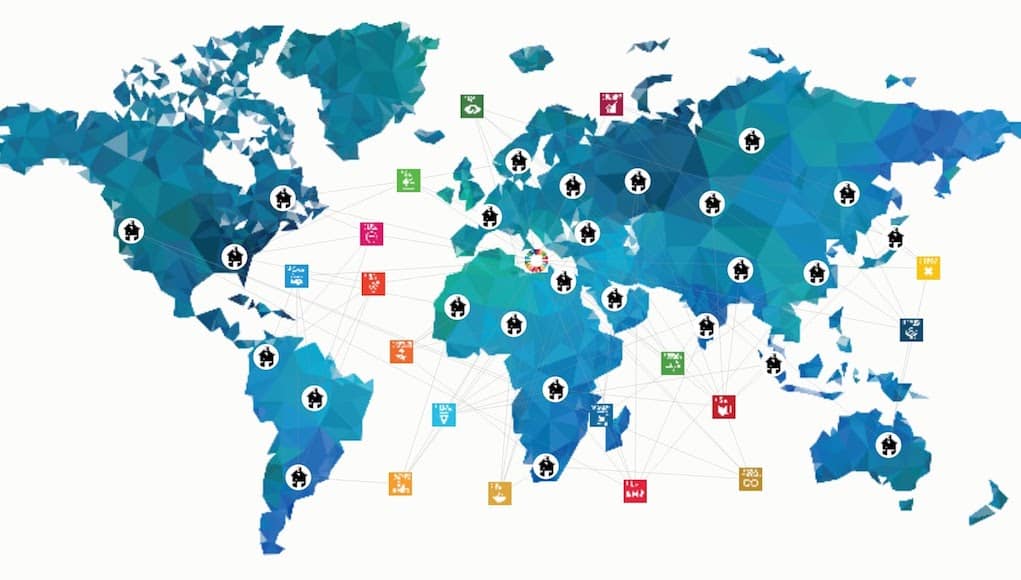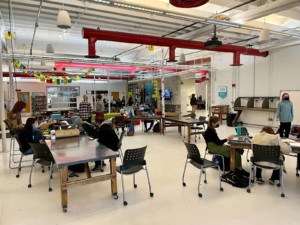For School Improvement, Network Globally

By Bonnie Lathram and David Potter
Here’s why global should be the education movement of 2017: school improvement.
School improvement is difficult. A US Department of Education report released last week on the five-year, $7 billion dollar School Improvement Grants (SIG), highlighted this difficulty, finding that the largest-ever national intervention to improve failing schools was ineffective:
- SIG-funded models had no statistically significant impact on test scores, high school graduation, or college enrollment,
- There were no statistically significant impacts on student outcomes within student and school subgroups, and
- In elementary grades, there was no evidence that one model was more effective at improving student achievement than another
We have had several years to look closely at school improvement models. And now we are asking, what is working? What does the research show? Where is improvement happening? How can we collaborate and learn together to share what is working both across the country and around the globe?
The Network School Improvement Model
What we do know is that there are innovations and advancements in networks and platforms that are improving schools. As Tom Vander Ark wrote, “School networks are one of the most important innovations in the modern era of U.S. K-12 education.” School networks have shown and are continuing to show solid results.
Since 2010, we’ve followed the Hewlett Foundation’s quest for Deeper Learning and the 11 school networks that comprise this “network of networks.” During the same time period that the SIGs failed to show significant results, the Deeper Learning network did. A study of student performance in California and New York conducted by the American Institutes for Research found that attending Deeper Learning schools had a significant positive impact, on average, on students’ content knowledge, academic outcomes and social-emotional factors. Three-fifths of the students in the study were low-income, and their scores improved just as much as the scores of the students who were above the low-income cutoff.
More evidence of the effectiveness of networks to improve schools comes from Participate (recently known as VIF International Education). Surveys and studies of the Participate school network of more than 100 global and dual language schools showed significant positive impact on teacher engagement, teacher working conditions, student engagement and student academic outcomes. 

Globally Networked Districts
Edgecombe and Onslow Counties, both in North Carolina, are two examples of school districts that have globally networked their schools to improve outcomes. Edgecombe was honored in 2016 by the North Carolina Board of Education for transforming its high-poverty district through global education. Onslow was honored this month as North Carolina’s first Model Global-Ready District designation. What do these global districts look like?
- Facing one of the highest dropout rates and having three of the lowest performing elementary schools in the state, Edgecombe made a district-wide commitment to evidence-based global education approaches.
- The district established an expectation for all teachers in its 14 schools to be global educators and use online professional development to increase levels of global competence and skill in incorporating global concepts into daily instruction.
- Onslow is home to 52 international teachers hosted across 21 schools, and currently hosts the largest contingency of Chinese guest teachers in the United States.
- Onslow has formalized ongoing partnerships that connect 24 schools with eight countries and numerous cities.
Fantastic whole-district commitment to global competencies #SmartPlanet #Globaled https://t.co/bFGuxBVP5G
— Dave Potter (@GlobalReady) January 24, 2017
The Potential of Platforms to Network Networks
Successful school improvement, however, may not come from a specific model, but customized hybrids. Rather than lock districts into inflexible models like the SIGs did, school leaders can explore a global menu of successful, evidence practices, like social and emotional learning and project-based learning. This is where we see the potential of platforms to network networks that are finding success with their school improvement models.
Summit Public Schools’ Basecamp and New Tech Network’s Echo are two examples of platforms that are designed to scale learning networks. Participate is another example of a platform that increases opportunities to connect school networks worldwide. Participate is a “continuous learning platform” that allows schools, districts like Edgecombe and Onslow, and organizations to network and maintain public and private learning communities where educators share resources, ideas and interactive courses. Continuous learning platforms are designed to harness connections to power teacher learning and classroom practice in order to achieve better student outcomes across the world.
Call to Action
Research points to connecting teachers within a school through district, regional, national and global networks to support collaborative professional learning as an effective school improvement strategy. Twitter chats and EdCamps have shown that we can do this widely and inexpensively nearly anywhere, anytime.
Let’s connect high achieving school networks around the world. Connecting school networks will accelerate school improvement through enhanced teacher learning and better classroom practices, and thus improve student outcomes everywhere.
This call to action to connect high achieving school networks is not a nice-to-have, it’s a need-to-do. it’s imperative that nations that agreed to inclusive and equitable quality education for all by 2030 seek out school networks to connect with and learn from, and share their models and practices widely. Individual teachers and schools connecting will only have limited impact on Global Goal #4. To deliver quality education for all worldwide, we need exponential growth in collaboration among educators, students, parents and communities. Only connected networks of schools, districts, regions, states, provinces and national educational systems can deliver connections at that scale.
School improvement is difficult, but connecting school networks worldwide is an opportunity to make it less so.
Join Us
We challenge you to join us in creating a #SmartPlanet. Be a globally connected educator and invite others to join too.
- Connect. Sign up at Participate to access FREE online resources and join in the conversation with other globally aware educators.
- Create. Create a resource on Participate to share, or comment on someone else’s. Check out the specific resources for our #SmartPlanet series.
- Share. Join a chat to share your own best practices and learn from others.
- Guest post. If you are interested in sharing your story about innovations in learning and global competence, please email [email protected] with the title “Smart Planet.” See our guest posting policies for more.
This blog is part of our #SmartPlanet series in partnership with Participate. Check out #SmartPlanet on engage in the conversation on social media. Head over to Participate.com to view and create lessons and join a community of educators to promote global education, in the US and around the world.
For more, see:
- Why Global Should Be the Education Movement of 2017
- The New Equation for Global Competencies = PBL + SEL
- Getting Smart Podcast | Participate’s David Young on Building Global Competencies
- Infographic | Connecting Educators Globally
Dave Potter is Director of Global Schools Network at Participate. Follow him on Twitter: @GlobalReady
Stay in-the-know with all things EdTech and innovations in learning by signing up to receive the weekly Smart Update. This post includes mentions of a Getting Smart partner. For a full list of partners, affiliate organizations and all other disclosures, please see our Partner page.






0 Comments
Leave a Comment
Your email address will not be published. All fields are required.